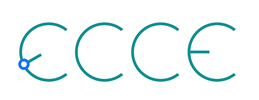1st ECCE Institutional Board Meeting

A recording of the meeting is available here.
The purpose of this first ECCE Institutional Board Meeting is discuss the organizational structure of the ECCE consortium and organize working groups to prepare the detector proposal.
Meeting Connection Information:
Time: Feb 26, 2021 11:00 AM Eastern Time (US and Canada)
Please click this URL to start or join. https://iastate.zoom.us/j/98519323028?pwd=NFdCTEdzWDRuUDA0SnlUVmExcXlnZz09
Or, go to https://iastate.zoom.us/join and enter meeting ID: 985 1932 3028 and password: 563287
Join from dial-in phone line:
Dial: +1 312 626 6799 or +1 646 876 9923
Meeting ID: 985 1932 3028
Participant ID: Shown after joining the meeting
International numbers available: https://iastate.zoom.us/u/abQx2M6irs
The EIC enables an exciting research program which will advance our understanding of the structure of hadronic matter. A state-of-the-art collider detector for the EIC, which is needed to realize its physics program, will be extremely complex. It will require extensive infrastructure, and will need to be integrated into the operation of the accelerator to a very high degree. The technically driven reference schedule for the EIC project is aggressive and presents a significant challenge for an EIC detector to be designed, built, commissioned, and ready to start delivering science when the machine begins to deliver collisions. The substantial resources needed to construct a state-of-the-art detector for the EIC present an additional challenge. Time-tested strategies for addressing such challenges include the reuse of existing infrastructure where suitable and leveraging the hard-won expertise gained through previous successful projects.
The EIC Collider Experiment (ECCE) consortium comprises 36 institutions assembled around the idea of building on the foundation of existing infrastructure available at RHIC IP8 and experimental equipment available there and elsewhere at JLab and RHIC. The consortium includes institutions with wide-ranging world-class detector expertise, strong familiarity with the EIC-suitable characteristics of IP8, and an understanding of the approach to DOE project management. Appropriate use of existing infrastructure will help mitigate several technical and schedule risks of an EIC detector project. The technical expertise in the consortium can build on and extend upon the base provided by existing equipment to provide a complete detector with capabilities mandated by the EIC science requirements as defined by the recent EIC Yellow-Report community effort. The substantial project management experience of the involved institutions provides credible “out of the box” know-how for realizing such a sophisticated detector.
Our working principles in developing this consortium have been:
- To follow the guidance provided by the Yellow Report detector design study.
- Explore utilization and/or upgrades of existing detectors and infrastructure that would enable EIC science by meeting the Yellow Report performance requirements.